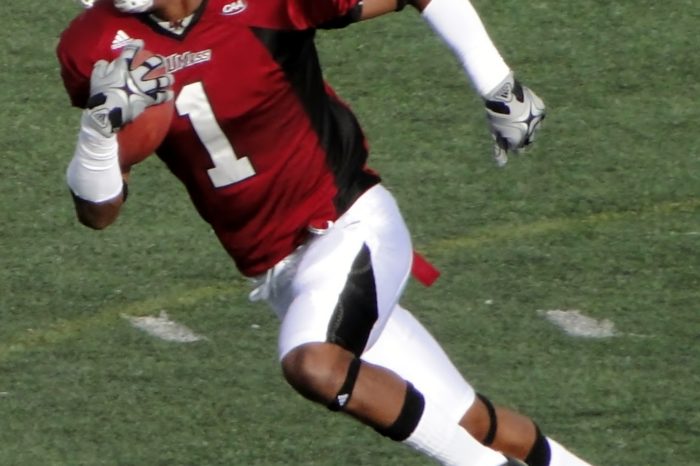The Mysterious World of NCAA Apparel Contracts
The world of collegiate athletics is, besides great entertainment, a monumental cash cow. In April, the NCAA extended its March Madness TV contract with CBS by 8 years – adding $8.8 billion on what was already a $10.8 billion deal. This works out to another billion dollars per year – for about a month of basketball.
The business of NCAA sports is as broad as it is profitable. On a micro level, schools with large sports programs earn huge sums of money through ticket sales, donations, and media rights. The larger sports-related industries – apparel, sports drinks, footwear – often contract with schools to provide their products at a discount, if not for free. The value of these contracts can be huge; the University of Michigan recently signed an agreement with Nike at nearly $11 million.
But contracts and their profitability – for schools and businesses – vary depending on the popularity of individual athletic programs. For large football and basketball schools, apparel companies will pay for the right to have athletes wear their uniforms and footwear. These schools – the Alabamas and Ohio States – give companies like Nike and Adidas an opportunity to regularly advertise their products on national television. But what about smaller schools that don’t have such broad audiences?
Through a public records request, Pioneer Institute obtained a contract between UMass and Adidas. It details the specifics of their agreement – including how much UMass has to pay for apparel and whether Adidas receives the right to use the UMass logo for advertising, among other purposes. The sports included in the contract are baseball, cross country, track and field, lacrosse, skiing, swimming and diving, tennis, softball, women’s basketball, and women’s cheer. Men’s football and hockey joined the agreement in 2007, as did in men’s basketball in a later amendment. Men’s tennis and men’s and women’s skiing ceased to be a part of the agreement as they are no longer varsity sports.
Amherst, UMass’ largest campus, is an NCAA Division 1 school, but it’s far from a national sports powerhouse. It does not play regularly on national TV, and hardly ever competes for a national championship in major sports. For a school like UMass, apparel contracts are not nearly as one-sided as those for larger sports schools.
UMass does receive a discount on apparel and footwear – 50% and 45%, respectively. But it’s also required to purchase at least $180,000 worth of Adidas product in the first year of the contract. That minimum falls in the second and third year – but only to $125,000. On top of this, Adidas has free license to use UMass’ name, trademark, image, and likeness for any sort of advertising or promotional purpose. UMass is also required to hang Adidas signs in various facilities, provide tickets for sporting events, and make two PA announcements during home games listing Adidas as its official supplier.
Furthermore, the contract includes incentives for UMass to buy more product. For example, if UMass purchases a total of $200,000 worth of Adidas apparel in the first year, it receives an extra $10,000 in retail. In addition, UMass teams get paid – in product – for winning their conference and reaching the NCAA tournament. All of these sports’ NCAA tournaments receive at least some national television exposure. This means if one of these UMass teams reaches their respective tournament, the Adidas logo would receive significant national exposure.
There have been a slew of retroactive amendments made to the UMass-Adidas contract, often to refine minimum purchase requirements and incentive levels. A 2013 amendment increased the football program’s performance incentives: $10,000 for winning its conference, $10,000 for making a bowl game, $5,000 for 7 or more wins in a single season. The amendment was signed, by no coincidence, just before UMass’ first season as a bowl-eligible Football Bowl Subdivision team; Adidas’ interest peaked when UMass could compete at the highest (and most televised) level of college football.
But the contract does leave questions unanswered. Men’s basketball was added to the agreement in 2007, but no amendments specify an individual performance incentive for this program. UMass, if anything, is known for its men’s basketball team, which famously made the NCAA Final Four under John Calipari in 1996. Moreover, the individualized performance incentives for the teams mentioned above (lacrosse, softball, and hockey) were completely removed in a 2013 amendment for unknown reasons.
Team success generates incentives, and teams more likely to receive attention and play on national TV get more favorable terms. It would not be surprising if men’s basketball, like football, received its own incentive structure specified elsewhere, considering its success means a level of exposure that would be extremely beneficial for Adidas.
The linear relationship between team success and contract profitability is clear. UMass, like any other mid-level division 1 school, has a huge monetary incentive to win – especially when it comes to highly popular sports like basketball and football. And it’s not just about current contract incentives. If UMass basketball or football becomes a perennial powerhouse, the school can generate money by selling its media rights to TV networks, which would be more eager to televise its games. That spike in national exposure would attract higher bidders for apparel contracts. If UMass does start to win more, Adidas could be paying the school to wear its product, not the other way around.



